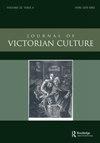Seen through Deep Time: Occult Clairvoyance and Palaeoscientific Imagination
IF 0.2
3区 历史学
Q2 HISTORY
引用次数: 0
Abstract
Dating from the middle of the nineteenth century, prominent paranormal researchers in Britain and the United States began to claim that they could see through time. Using clairvoyant powers, they proposed to solve the mysteries of geology and palaeontology, not least by filling in the missing links in the evolution of life. This article explores the literary outputs of these figures, with an especial focus on the Anglo-American ‘psychometers’ William and Elizabeth Denton and selected members of the Theosophical Society, including Helena Petrovna Blavatsky. I argue that clairvoyants’ narratives of exploration in the prehistoric past were heavily indebted not just to the technical concepts of mainstream palaeoscience, but also to the figurative language and visual iconography used by palaeoscientists and science writers, including their metaphors of necromancy and visual spectacle. The vivid language of Victorian palaeoscience, crafted to see the unseeable events of prehistory, has been studied in depth by students of literature and science; recently, literary scholars have paid increasing attention to the imaginative prose of occult science writing. I bring these bodies of scholarship together, contesting that Romantic conceptions of science motivated paranormal researchers to literalize the figurative language of time-travel deployed by more orthodox palaeoscientists. Examining the work of the Dentons, Blavatsky, and others, I show that that the vivid literature of palaeoscience inspired a realm where practitioners on the fringes of elite science could make bold if precarious claims, instilling individual agency into the abysm of deep time.透视深时间:神秘的千里眼和古科学想象
早在19世纪中叶,英国和美国著名的超自然现象研究人员就开始声称他们可以看穿时间。利用千里眼的力量,他们提出要解决地质学和古生物学的奥秘,尤其是通过填补生命进化中缺失的环节。本文探讨了这些人物的文学作品,特别关注了英美“心理测量师”威廉和伊丽莎白·丹顿,以及包括海伦娜·彼得罗夫娜·布拉瓦茨基在内的神智学会精选成员。我认为,千里眼对史前历史的探索叙述不仅严重依赖于主流古科学的技术概念,而且还依赖于古科学家和科学作家使用的比喻语言和视觉图像,包括他们对巫术和视觉奇观的隐喻。文学和科学专业的学生对维多利亚时代古科学的生动语言进行了深入的研究,这些语言旨在揭示史前时期不可见的事件;近年来,文学学者越来越关注神秘科学写作中的想象散文。我把这些学术机构汇集在一起,反驳那些浪漫的科学观念促使超自然现象研究人员将更正统的古科学家所使用的时间旅行的比喻语言逐字化的说法。通过对Dentons、Blavatsky和其他人的研究,我发现生动的古科学文献启发了一个领域,在这个领域中,精英科学边缘的实践者可以大胆地提出危险的主张,将个人能动性灌输到深时间的深渊中。
本文章由计算机程序翻译,如有差异,请以英文原文为准。
求助全文
约1分钟内获得全文
求助全文

 求助内容:
求助内容: 应助结果提醒方式:
应助结果提醒方式:


